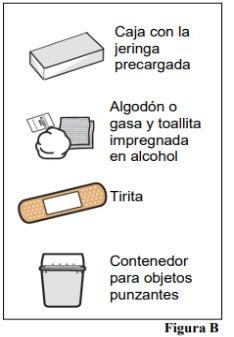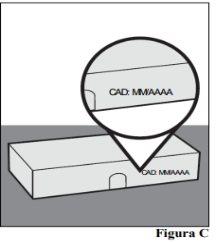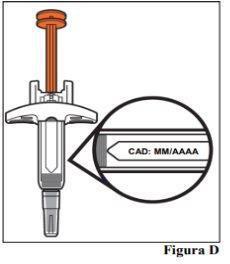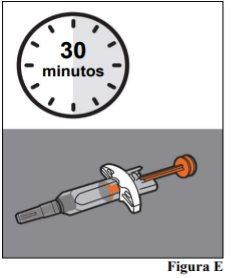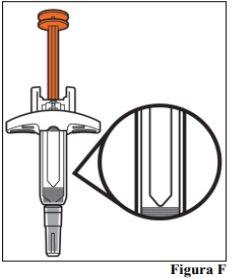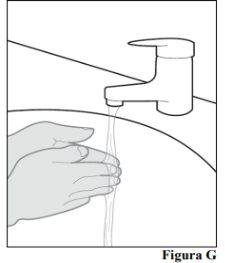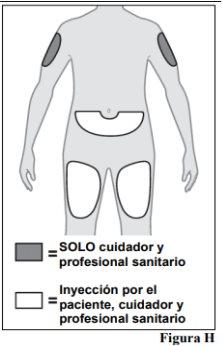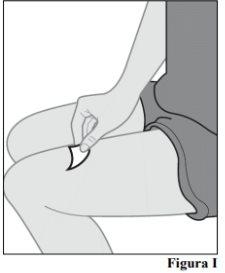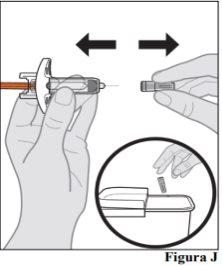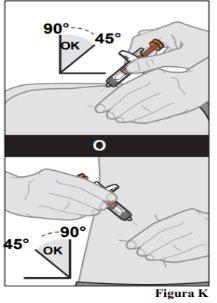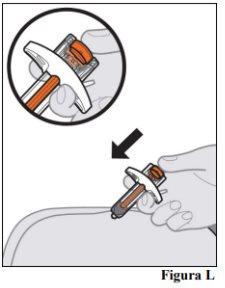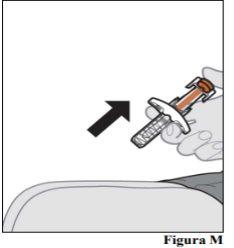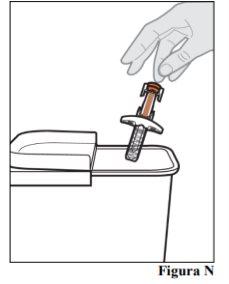
AVTOZMA 162 mg INJECTABLE SOLUTION IN PRE-FILLED SYRINGE

How to use AVTOZMA 162 mg INJECTABLE SOLUTION IN PRE-FILLED SYRINGE
Introduction
Package Leaflet: Information for the User
Avtozma 162 mg, solution for injection in pre-filled syringe
tocilizumab
This medicine is subject to additional monitoring, which will allow for quick identification of new safety information. You can help by reporting any side effects you may get. The last section of this leaflet includes information on how to report side effects.
Read all of this leaflet carefully before you start using this medicine, because it contains important information for you.
Keep this leaflet, you may need to read it again.
- If you have any further questions, ask your doctor, pharmacist, or nurse.
- This medicine has been prescribed for you only. Do not pass it on to others. It may harm them, even if their signs of illness are the same as yours.
- If you get any side effects, talk to your doctor, pharmacist, or nurse. This includes any possible side effects not listed in this leaflet. See section 4.
In addition to this leaflet, you will be given a patient information card, which contains important safety information that you should know before receiving Avtozma and during treatment with Avtozma.
Contents of the package leaflet:
- What is Avtozma and what is it used for
- What you need to know before you use Avtozma
- How to use Avtozma
- Possible side effects
- Storage of Avtozma
- Contents of the pack and further information
- Instructions for use
1. What is Avtozma and what is it used for
Avtozma contains the active substance tocilizumab, which is a protein obtained from specific immune cells (monoclonal antibody), which blocks the action of a specific type of protein (cytokine) called interleukin-6. This protein is involved in inflammatory processes in the body, and blocking it can reduce inflammation. Avtozma is indicated for the treatment of:
- adults with active moderate to severe rheumatoid arthritis (RA), which is an autoimmune disease, if previous treatments have not worked well.
- adults with severe, active, and progressive rheumatoid arthritis (RA), who have not been previously treated with methotrexate.
Avtozma helps reduce the symptoms of RA such as pain and swelling in the joints and can also improve performance in daily tasks. Avtozma has been shown to decrease the progression of damage to the cartilage and bones of the joints caused by the disease and improve the ability to perform daily activities.
Avtozma is usually used in combination with another medication for RA called methotrexate. However, Avtozma may be administered alone if your doctor determines that methotrexate is not suitable.
- adults with a disease of the arteries called giant cell arteritis (GCA), caused by inflammation of the largest arteries in the body, especially those that supply blood to the head and neck. Symptoms may include headache, fatigue, and jaw pain. Effects may include stroke and blindness.
Avtozma can reduce pain and swelling of the arteries and veins in the head, neck, and arms.
GCA is often treated with medications called steroids. These are usually effective, but they can have side effects if used at high doses for a long time. Reducing the dose of steroids can also lead to a flare-up of GCA. The addition of Avtozma to treatment makes it possible to shorten the duration of steroid use while still controlling GCA.
- children and adolescents, 1 year of age and older withactive systemic juvenile idiopathic arthritis (sJIA),an inflammatory disease that causes pain and swelling in one or more joints, as well as fever and skin rash.
Avtozma is used to improve the symptoms of sJIA. It can be administered in combination with methotrexate or alone.
- children and adolescents,2 years of age and older, with active polyarticular juvenile idiopathic arthritis (pJIA). This is an inflammatory disease that causes pain and swelling in one or more joints.
Avtozma is used to improve the symptoms of pJIA. It can be administered in combination with methotrexate or alone.
2. What you need to know before you use Avtozma
Avtozma will not be administered to you
- If you or a child (if they are the patient you are caring for) are allergic to tocilizumab or any of the other components of this medicine (listed in section 6). (See special warnings at the end of this section under the subtitle “Avtozma contains polysorbate”).
- If you or a child (if they are the patient you are caring for) have a severe active infection.
If any of these apply to you, consult your doctor. Do not use Avtozma.
Warnings and precautions
Consult your doctor, pharmacist, or nurse before starting to receive Avtozma.
- If you experience allergic reactionssuch as chest tightness, wheezing, dizziness, or severe dizziness, swelling of the lips, tongue, face, or skin rash, hives, or itching during or after injection, tell your doctor immediately.
- If you have experienced any symptoms of an allergic reaction after administration of Avtozma, do not take the next dose until you have informed your doctor and your doctor has indicated that you can take the next dose.
- If you have any type of infection, whether short-term or long-term, or if you get infections frequently tell your doctor immediatelyif you feel unwell. Avtozma may reduce your body's ability to respond to infections and may make an existing infection worse or increase the likelihood of getting a new infection.
- If you have had tuberculosis, inform your doctor. Your doctor will check for signs and symptoms of tuberculosis before starting treatment with Avtozma. Inform your doctor immediately if symptoms of tuberculosis (persistent cough, weight loss, general malaise, low-grade fever), or any other infection appear during or after treatment.
- If you have had intestinal ulcer or diverticulitis, inform your doctor. Symptoms would include abdominal pain and unexplained changes in bowel habits with fever.
- If you have liver disease, inform your doctor. Before using Avtozma, your doctor will perform a blood test to measure your liver function.
- If a patient has been recently vaccinated, or is scheduled to be vaccinated, inform your doctor. All patients must be up to date with their vaccination schedule before starting treatment with Avtozma. Certain types of vaccines should not be administered while receiving Avtozma.
- If you have cancer, inform your doctor. Your doctor will have to decide if you can continue receiving treatment with Avtozma.
- If you have cardiovascular risk factors, such as high blood pressure and high cholesterol levels, inform your doctor. These factors need to be controlled while receiving treatment with Avtozma.
- If you have moderate to severe kidney problems, your doctor will monitor you.
- If you have persistent headaches.
Your doctor will perform blood tests before you receive Avtozma to determine if you have a low white blood cell count, a low platelet count, or elevated liver enzymes.
Children and adolescents
Subcutaneous injection of Avtozma is not recommended in children under 1 year of age. Avtozma should not be administered to children with sJIA with a weight below 10 kg.
If a child has a history of macrophage activation syndrome(uncontrolled activation and proliferation of specific blood cells), inform your doctor. Your doctor will have to decide if Avtozma can still be administered.
Other medicines and Avtozma
Tell your doctor if you are taking any other medicines, or have taken any recently. This is because Avtozma may affect the way some medicines work, and a dose adjustment may be needed. Tell your doctorif you have recently used medicines that contain any of these active substances:
- methylprednisolone, dexamethasone, used to reduce inflammation
- simvastatin or atorvastatin, used to reduce cholesterol levels
- calcium channel blockers, such as amlodipine used in the treatment of high blood pressure
- theophylline used in the treatment of asthma
- warfarin or phenprocoumon, used as anticoagulants
- phenytoin used in the treatment of seizures
- cyclosporin used in organ transplants as an immunosuppressant
- benzodiazepines, such as temazepam used to calm anxiety.
Because there is no clinical experience, the use of tocilizumab with other biologic medicines used to treat RA, sJIA, pJIA, or GCA is not recommended.
Pregnancy, breastfeeding, and fertility
Avtozma should not be used during pregnancy, unless clearly necessary. Talk to your doctor if you are pregnant, think you may be pregnant, or plan to become pregnant.
Women of childbearing age mustuse effective contraceptive methods during and up to 3 months after finishing treatment.
Stop breastfeeding if you start treatment with Avtozma, and consult your doctor. Before restarting breastfeeding, at least 3 months must have passed since your last treatment with Avtozma. It is not known if Avtozma passes into breast milk.
Driving and using machines
This medicine may cause dizziness, if you feel dizzy, do not drive or use machines.
Avtozma contains polysorbate
This medicine contains 0.2 mg of polysorbate 80 in each pre-filled syringe. Polysorbates can cause allergic reactions. Inform your doctor if you have any known allergy.
3. How to use Avtozma
Follow the instructions for administration of this medicine exactly as indicated by your doctor, pharmacist, or nurse. If you are unsure, consult your doctor, pharmacist, or nurse again.
Treatment should be initiated by a healthcare professional with experience in the diagnosis and treatment of RA, sJIA, pJIA, or GCA.
Recommended dose
The dose for adults with RA and GCA is 162 mg (the contents of one pre-filled syringe) administered once a week.
Children and adolescents with sJIA (1 year of age and older)
The usual dose of Avtozma depends on the patient's weight.
- If the patient weighs less than 30 kg: the dose is 162 mg (the contents of 1 pre-filled syringe), once every 2 weeks
- If the patient weighs 30 kg or more: the dose is 162 mg (the contents of 1 pre-filled syringe), once a week.
Children and adolescents with pJIA (2 years of age and older)
The usual dose of Avtozma depends on the patient's weight.
- If the patient weighs less than 30 kg: the dose is 162 mg (the contents of 1 pre-filled syringe), once every 3 weeks
- If the patient weighs 30 kg or more: the dose is 162 mg (the contents of 1 pre-filled syringe), once every 2 weeks.
Avtozma is administered by injection under the skin (subcutaneously). Initially, your doctor or nurse may inject Avtozma for you. However, your doctor may decide that you can inject Avtozma yourself. In this case, you will receive information on how to self-inject Avtozma. Parents and caregivers will receive instructions on how to inject Avtozma to patients who cannot inject themselves, such as children.
Talk to your doctor if you have any questions about how to self-administer an injection or to the child you are caring for. At the end of this leaflet, you will find detailed “instructions for administration”.
If you are given more Avtozma than you should
Since Avtozma is administered in a pre-filled syringe, it is unlikely that you will be given too much. However, if you are concerned, talk to your doctor, pharmacist, or nurse.
If an adult with RA and GCA or a child or adolescent with sJIA misses or forgets a dose
It is very important to use Avtozma exactly as your doctor prescribes. Keep a record of your next dose.
- If you forget your weekly dose within 7 days, take your dose on the next scheduled day.
- If you forget your every 2 weeks dose within 7 days, inject a dose as soon as you remember and administer your next dose according to your original schedule.
- If you forget your dose for 7 days or more, or are unsure when to inject Avtozma, call your doctor or pharmacist.
If a child or adolescent with pJIA misses or forgets a dose
It is very important to use Avtozma exactly as your doctor prescribes. Keep a record of your next dose.
- If you forget a dose within 7 days, inject a dose as soon as you remember and administer your next dose according to your original schedule.
- If you forget a dose for 7 days or more, or are unsure when to inject Avtozma, call your doctor or pharmacist.
If you stop treatment with Avtozma
You must not stop treatment with Avtozma without consulting your doctor first.
If you have any other questions about the use of this medicine, ask your doctor, pharmacist, or nurse.
4. Possible side effects
Like all medicines, this medicine can cause side effects, although not everybody gets them.
Side effects may occur up to at least 3 months after your last dose of Avtozma.
Serious side effects: consult your doctor immediately.
These are common: May affect up to 1 in 10 people
Allergic reactionsduring or after injection:
- difficulty breathing, chest tightness, or dizziness
- skin rash, itching, hives, or swelling of the lips, tongue, face
If you experience any of these symptoms, talk to your doctor immediately.
Signs of serious infections:
- fever and chills
- mouth or skin blisters
- stomach pain
Signs and symptoms of liver damage
May affect up to 1 in 1,000 people
- fatigue
- abdominal pain
- jaundice (yellowing of the skin or eyes)
If you notice any of these symptoms, inform your doctor as soon as possible.
Very common side effects:
May affect more than 1 in 10 people
- upper respiratory tract infections, with typical symptoms such as cough, nasal congestion, runny nose, sore throat, and headache
- high levels of fat in the blood (cholesterol)
- reactions at the injection site
Common side effects:
May affect up to 1 in 10 people
- lung infection (pneumonia)
- shingles (herpes zoster)
- fever (oral herpes), blisters
- skin infections (cellulitis), sometimes with fever and chills
- rash and itching, hives
- allergic reactions (hypersensitivity)
- eye infection (conjunctivitis)
- headache, dizziness, high blood pressure
- mouth ulcers, stomach pain
- fluid retention (edema) in the lower legs, weight gain
- cough, shortness of breath
- low white blood cell count in blood tests (neutropenia, leucopenia)
- abnormal liver function tests (elevated transaminases)
- increased bilirubin measured by blood tests
- low levels of fibrinogen in the blood (protein involved in blood clotting)
Uncommon side effects:
May affect up to 1 in 100 people
- diverticulitis (fever, nausea, diarrhea, constipation, stomach pain)
- swollen and red areas in the mouth
- high levels of fat in the blood (triglycerides)
- stomach ulcers
- kidney stones
- hypothyroidism
Rare side effects:
May affect up to 1 in 1,000 people
- Stevens-Johnson syndrome (skin rash that can lead to severe skin peeling)
- fatal allergic reactions (anaphylaxis)
- liver inflammation (hepatitis), jaundice
Very rare side effects:
May affect up to 1 in 10,000 people
- low count of white blood cells, red blood cells, and platelets in blood tests
- liver failure
Side effects in children and adolescents with sJIA or pJIA
In children and adolescents with sJIA or pJIA, side effects are generally similar to those in adults. Some side effects are seen more frequently in children and adolescents: nasal and throat inflammation, headache, nausea, and decreased white blood cell count.
If you experience any side effects, talk to your doctor, pharmacist, or nurse, even if it is possible side effects not listed in this leaflet.
Reporting of side effects
If you experience any side effects, talk to your doctor, pharmacist, or nurse, even if it is possible side effects not listed in this leaflet. You can also report them directly through the national reporting system included in Appendix V. By reporting side effects, you can help provide more information on the safety of this medicine.
5. Storage of Avtozma
Keep this medication out of sight and reach of children.
Do not use this medication after the expiration date that appears on the label of the pre-filled syringe and on the carton (EXP). The expiration date is the last day of the indicated month.
Store in a refrigerator (between 2°C and 8°C). Do not freeze. Once removed from the refrigerator, the pre-filled syringe can be stored for up to 3 weeks at a temperature of 30°C or below.
Keep the pre-filled syringes in the outer packaging to protect from light and moisture.
Do not use this medication if you observe that it is cloudy or contains particles, is of a color other than colorless and yellow, or if any part of the pre-filled syringe appears damaged.
Do not shake the syringe. After removing the needle cap, the injection should be initiated within the next 5 minutes to avoid the medication drying out and blocking the needle. If the pre-filled syringe is not used within 5 minutes of removing the cap, it should be discarded in a puncture-resistant container and a new pre-filled syringe should be used.
If after inserting the needle, the syringe plunger cannot be pressed, the pre-filled syringe should be discarded in a special container for puncture-resistant objects and a new one should be used.
6. Container Contents and Additional Information
Composition of Avtozma
- The active ingredient is tocilizumab.
Each pre-filled syringe contains 162 mg of tocilizumab in 0.9 ml.
- The other components are L-histidine, L-threonine, L-methionine, polysorbate 80, and water for injectable preparations.
Appearance of the Product and Container Contents
Avtozma is an injection solution. The solution is colorless to yellow.
Avtozma is supplied in 0.9 ml pre-filled syringes containing 162 mg of tocilizumab injection solution.
The Avtozma pre-filled syringe for patient use is available in packs containing:
- 1 pre-filled syringe
- 4 pre-filled syringes
- 12 (3 packs of 4) pre-filled syringes (multiple packs)
Not all pack sizes may be marketed.
Marketing Authorization Holder and Manufacturer
Celltrion Healthcare Hungary Kft.
1062 Budapest
Váci út 1-3. WestEnd Office Building B tower
Hungary
Manufacturer
Nuvisan France SARL
2400, Route des Colles,
06410, Biot,
France
Midas Pharma GmbH
Rheinstr. 49,
55218 Ingelheim,
Germany
KYMOS S.L.
Ronda Can Fatjó, 7B.
08290 Cerdanyola del Vallès,
Barcelona,
Spain
You can request more information about this medication by contacting the local representative of the marketing authorization holder:
België/Belgique/Belgien Celltrion Healthcare Belgium BVBA Tél/Tel: +32 2 643 71 81 BEinfo@celltrionhc.com | Lietuva Celltrion Healthcare Hungary Kft. Tel.: +36 1 231 0493 |
| Luxembourg/Luxemburg Celltrion Healthcare Belgium BVBA Tél/Tel: +32 2 643 71 81 BEinfo@celltrionhc.com |
Ceská republika Celltrion Healthcare Hungary Kft. Tel: +36 1 231 0493 | Magyarország Celltrion Healthcare Hungary Kft. Tel: +36 1 231 0493 |
Danmark Celltrion Healthcare Hungary Kft. Tlf: +36 1 231 0493 | Malta Mint Health Ltd. Tel: +356 2093 9800 |
Deutschland Celltrion Healthcare Deutschland GmbH Tel: +49(0)30 346494150 infoDE@celltrionhc.com | Nederland Celltrion Healthcare Netherlands B.V. Tel: + 31 20 888 7300 NLinfo@celltrionhc.com |
Eesti Celltrion Healthcare Hungary Kft. Tel: +36 1 231 0493 | Norge Celltrion Healthcare Hungary Kft. Tlf: +36 1 231 0493 |
España CELLTRION FARMACEUTICA (ESPAÑA) S.L. Tel: +34 910 498 478 | Österreich Astro-Pharma GmbH Tel: +43 1 97 99 860 |
Ελλáδα ΒΙΑΝΕΞ Α.Ε. Τηλ: +30 210 8009111 | Polska Celltrion Healthcare Hungary Kft. Tel.: +36 1 231 0493 |
France Celltrion Healthcare France SAS Tél.: +33 (0)1 71 25 27 00 | Portugal CELLTRION PORTUGAL, UNIPESSOAL LDA. Tel: +351 21 936 8542 |
Hrvatska Oktal Pharma d.o.o. Tel: +385 1 6595 777 | România Celltrion Healthcare Hungary Kft. Tel: +36 1 231 0493 |
Ireland Celltrion Healthcare Ireland Limited Tel: +353 1 223 4026 | Slovenija OPH Oktal Pharma d.o.o. Tel.: +386 1 519 29 22 |
Ísland Celltrion Healthcare Hungary Kft. Sími: +36 1 231 0493 | Slovenská republika Celltrion Healthcare Hungary Kft. Tel: +36 1 231 0493 |
Italia Celltrion Healthcare Italy S.r.l. Tel: +39 02 47927040 | Suomi/Finland Celltrion Healthcare Finland Oy. Puh/Tel: +358 29 170 7755 |
Κúπρος C.A. Papaellinas Ltd Τηλ: +357 22741741 | Sverige Celltrion Sweden AB contact_se@celltrionhc.com |
Latvija Celltrion Healthcare Hungary Kft. Talr.: +36 1 231 0493 |
Date of Last Revision of this Leaflet
Other Sources of Information
Detailed information on this medicinal product is available on the European Medicines Agency website https://www.ema.europa.eu/.
- Instructions for Use
Read and follow the instructions for use provided with the Avtozma pre-filled syringe before starting to use it and each time you are given a new supply. They may contain new information. Before using Avtozma, make sure your healthcare professional teaches you how to use it correctly.
Important Information
- Do notremove the cap from the pre-filled syringe until you are ready to administer the Avtozma injection.
- Do notever attempt to disassemble the pre-filled syringe.
- Do notreuse a pre-filled syringe.
- Do notshake the pre-filled syringe.
- Do notuse the pre-filled syringe if it has been dropped or is damaged.
- Information for the Patient on Hypersensitivity Reactions (or Anaphylaxis):if you experience symptoms such as skin rash, itching, chills, swelling of the face, lips, tongue, or throat, chest pain, wheezing, difficulty breathing or swallowing, or feeling of dizziness or fainting, among others, at any time when you are not in the center during or after an injection, you should seek immediate medical attention.
How to Store Avtozma
- Store the unused pre-filled syringe in its original carton in a refrigerator at a temperature between 2 °C and 8 °C. Do notfreeze.
- Once removed from the refrigerator, Avtozma can be stored for up to 3 weeks at a temperature of 30 °C or below. If not used within 3 weeks, Avtozma should be discarded.
- Keep the pre-filled syringe away from direct sunlight.
- Do notremove the pre-filled syringe from its original carton while it is being stored.
- Do notleave the pre-filled syringe unattended.
- Keep the pre-filled syringe out of the reach of children. It contains small parts.
Components of the Pre-filled Syringe (see Figure A).
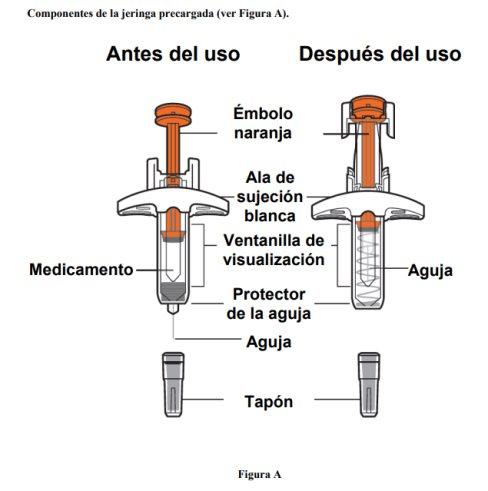
Preparation for Injection
|
The following are not included in the carton:
|
|
|
|
|
|
|
|
|
|
|
|
|
|
|
|
With the other hand, carefully pull the cap straight off (see Figure J). Note:If you cannot remove the cap, ask a caregiver for help or contact your healthcare professional.
|
|
|
|
|
|
|
After the Injection
| |
|
Note:If someone else administers the injection to you, that person should also be careful when removing the pre-filled syringe and disposing of it to avoid accidental needle sticks and infections.
Discard the full sharps container as instructed by your healthcare professional or pharmacist. If you do not have a sharps container, you can use a household container that is leak-resistant, puncture-resistant, and has a tight-fitting lid. Disposal of unused medication and all materials that have come into contact with it will be carried out in accordance with local regulations. |
|



